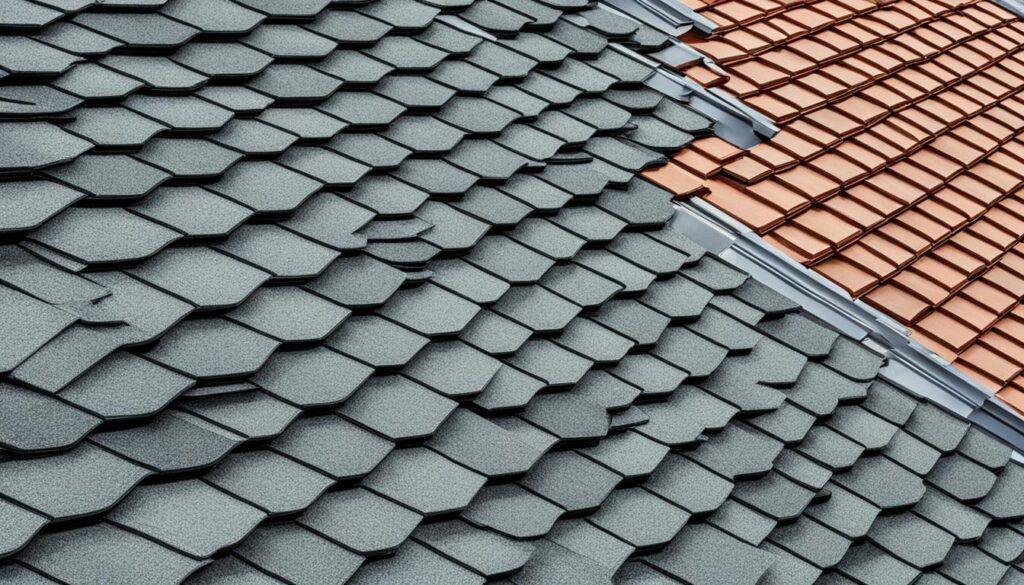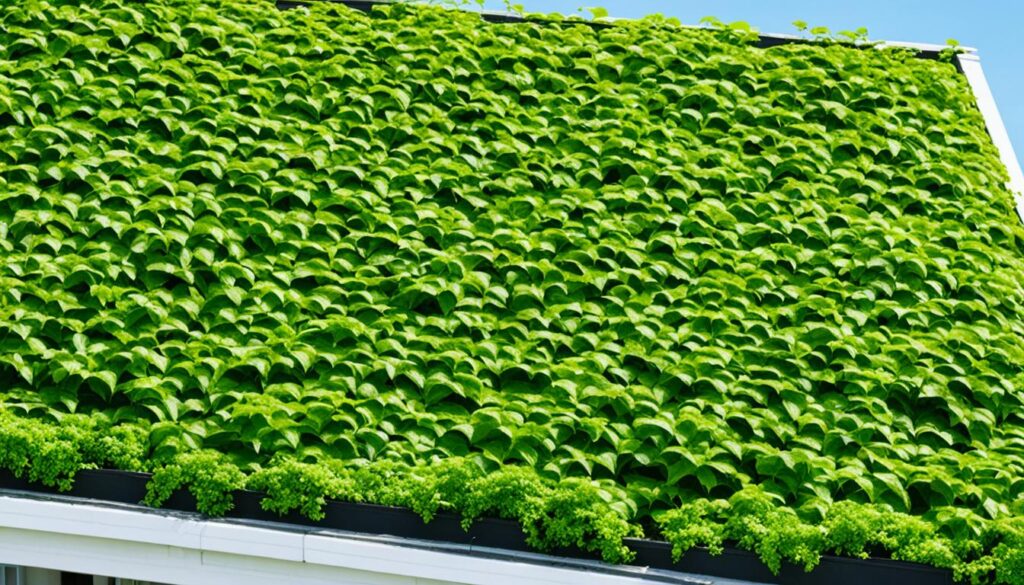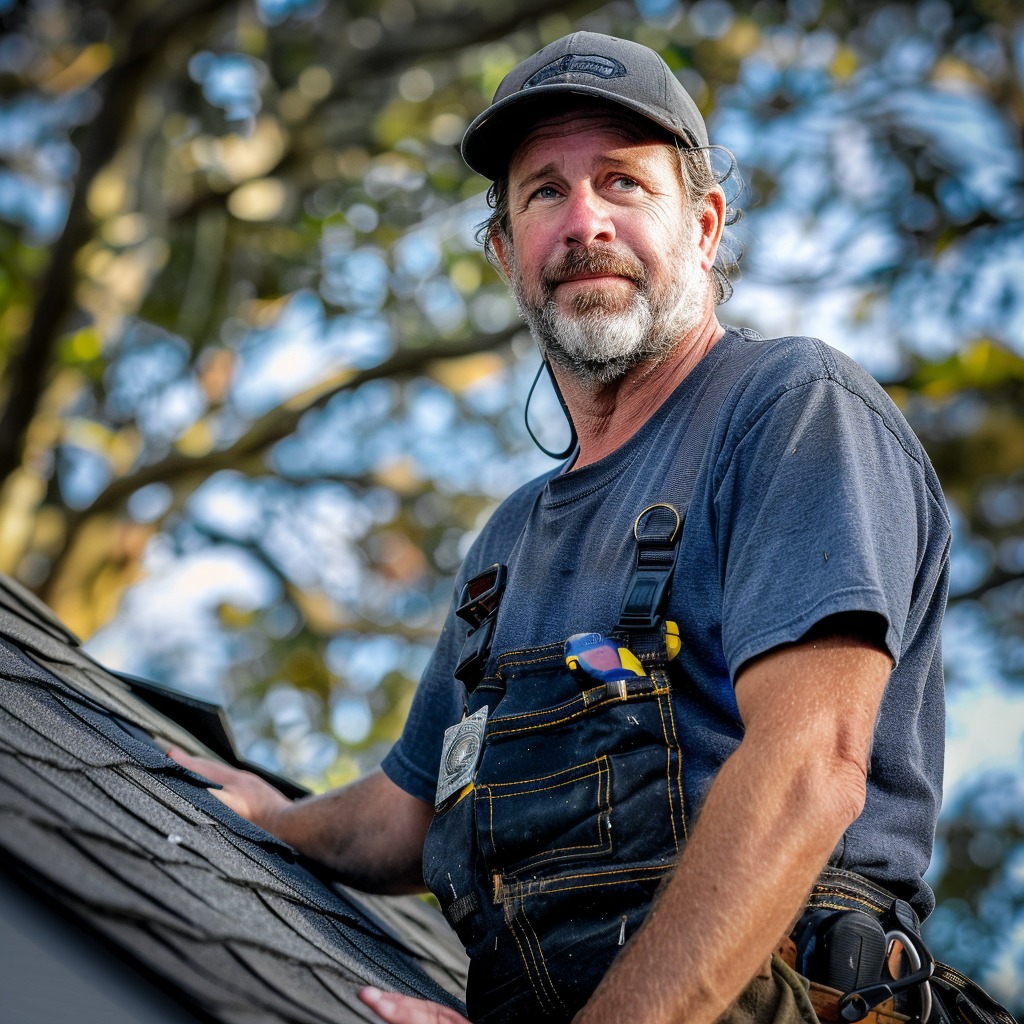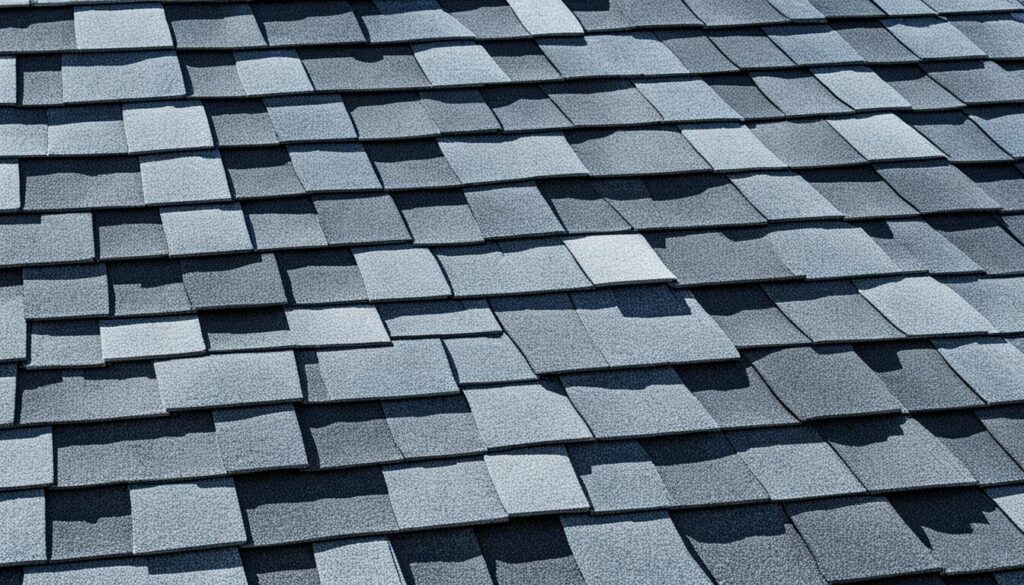When it comes to our homes, the roof is quite literally our first line of defense against the elements. But have you ever wondered how long your roof will actually last? Is it just a matter of time before you find yourself faced with the daunting task of a roof replacement? Or can you take steps to maximize its lifespan and save yourself from a costly and inconvenient renovation?
In this article, we will explore the average lifespan of a roof and the various factors that can affect its durability. We will delve into the types of roofing materials, the importance of quality and workmanship, the role of climate and maintenance, and how warranties compare to a roof’s lifespan. By the end of this article, you will have a better understanding of how long your roof can truly last and what you can do to ensure it stands strong for years to come.
Key Takeaways:
- The average lifespan of a roof typically ranges between 25 to 50 years, depending on various factors.
- Factors that can impact a roof’s lifespan include the type of materials used, the quality of materials, the underlayment, the workmanship of installation, the climate and sun exposure, the color of materials, the slope of the roof, ventilation, and regular roof maintenance.
- While the average lifespan of a roof usually exceeds the length of a warranty, warranties are still important for unforeseen damages and premature failures.
- Different types of roofs have different expected lifespans, with materials like slate and concrete tiles lasting over 50 years and sometimes even up to 100 years.
- To extend the lifespan of your roof, practice regular maintenance, prompt repairs, proper ventilation and insulation, and follow any recommended guidelines from the roofing manufacturer.
Factors that Impact the Average Lifespan of Your Roof
Several factors can affect the average lifespan of a roof, including the choice of roofing materials, quality of materials, underlayment, workmanship of installation, climate and sun exposure. These factors collectively contribute to the durability and longevity of your roof.
The type of roofing materials used plays a significant role in determining how long your roof will last. Different materials have varying levels of durability and resistance to weathering. For instance, asphalt shingles are a popular choice due to their affordability and decent lifespan, typically lasting between 20 to 30 years. On the other hand, metal roofs can last anywhere from 40 to 70 years, making them a more durable option.
The quality of materials used is equally important. Opting for low-quality materials may lead to more frequent repairs and a shorter overall lifespan. Investing in high-quality materials ensures better resistance to weather conditions and improves the longevity of your roof.
The underlayment, which provides essential waterproofing protection, is a crucial component of any roof system. It acts as a barrier that prevents moisture buildup and protects against mold and rot. The quality and durability of the underlayment directly impact the lifespan of your roof.
The workmanship of the installation is another critical factor that affects roof longevity. Hiring a reputable contractor with experience and expertise in roof installation ensures proper techniques and attention to detail, which can extend the lifespan of your roof.
The climate and sun exposure in your area also influence the lifespan of your roof. Extreme temperatures, storms, and prolonged sun exposure can cause wear and tear on roofing materials, leading to premature aging and damage. Considering the specific climate conditions when selecting materials can help ensure better durability.
In addition, other factors such as the color of roofing materials, the slope of the roof, ventilation, and regular maintenance play essential roles in the longevity of your roof. Proper ventilation helps regulate temperature and reduces the risk of moisture damage, while regular maintenance and inspections help identify and address any issues before they escalate.
To summarize, the durability and longevity of your roof are influenced by various factors, including the type and quality of materials used, the underlayment, the workmanship of installation, climate and sun exposure, and regular maintenance. Considering these factors when constructing or repairing your roof can help maximize its lifespan and protect your investment.
| Factors | Impact on Roof Lifespan |
|---|---|
| Roofing Materials | Choice of durable materials can extend lifespan |
| Quality of Materials | High-quality materials increase overall durability |
| Underlayment | Ensures waterproofing protection and prevents moisture buildup |
| Workmanship of Installation | Professional installation techniques improve longevity |
| Climate and Sun Exposure | Extreme weather and prolonged sun exposure can cause damage |
| Color of Materials | Can affect heat absorption and aging of roofing materials |
| Slope of the Roof | Proper slope ensures effective water drainage |
| Ventilation | Improper ventilation can lead to moisture-related issues |
| Regular Maintenance | Timely inspections and repairs prevent minor issues from escalating |
How Do Warranties Compare to the Lifespan of a Roof?
When investing in a new roof, understanding the relationship between warranties and the lifespan of your roof is crucial. While the average lifespan of a roof usually exceeds the length of a warranty, warranties still offer valuable protection in case of unexpected damages or premature failure.
Roof warranties typically provide coverage for a specified period of time, ranging from 10 to 50 years, depending on the manufacturer and the quality of the materials used. Higher quality roofing materials often come with longer warranties, offering greater assurance of durability and longevity.
When selecting roofing materials, it’s important to consider the warranty coverage and choose materials with warranties that align with your desired lifespan for the roof. This ensures that you are protected in the event of any manufacturing defects or issues that may arise.
However, it’s important to note that warranties do not cover all types of damage. Most warranties include exclusions and limitations, such as damage caused by extreme weather conditions, improper installation, or lack of regular maintenance. It’s essential to review the warranty documentation carefully to understand the specific coverage and any associated requirements.
Furthermore, warranties often require proper installation by a certified contractor to be valid. This emphasizes the importance of hiring a reputable and experienced professional to ensure the correct installation and maintenance of your roof.
It’s worth mentioning that a roof’s lifespan is influenced by various factors such as the type of materials used, the quality of installation, climate conditions, and regular maintenance. While warranties provide added peace of mind, it’s crucial to prioritize proper care and maintenance to maximize the lifespan of your roof.
Remember that regular roof inspections, maintenance, and timely repairs can significantly extend the life of your roof, irrespective of warranty coverage. Invest in routine upkeep, and attend to any issues promptly, which can help prevent minor problems from escalating into major ones.
Key Points:
- Warranties offer protection against unexpected damages or premature failure of your roof.
- Roofing materials with longer warranties generally indicate higher quality and enhanced durability.
- Review warranty documentation carefully to understand coverage and any limitations or exclusions.
- Proper installation is crucial for warranty validity, highlighting the importance of hiring a certified contractor.
- Regular roof inspections, maintenance, and timely repairs are essential for maximizing roof lifespan.
| Aspect | Warranties | Lifespan |
|---|---|---|
| Scope of Coverage | Protect against unexpected damages or failures | No coverage for normal wear and tear or damage from external factors |
| Duration | Typically ranges from 10 to 50 years | Depends on the type of roof and materials used (25 to 50 years on average) |
| Quality Assurance | Higher quality materials often come with longer warranties | Depends on the type of materials used and the workmanship of installation |
| Installation Requirements | Proper installation by a certified contractor may be necessary | Proper installation is crucial for maximizing roof lifespan |
How Long Does a Roof Last?
The average lifespan of a roof typically ranges from 25 to 50 years. However, the actual lifespan of a roof depends on several factors, including the type of roof and the materials used.
Different types of roofs have different expected lifespans. For example, three-tab asphalt shingles typically last around 15 to 20 years, while wood shingles can last up to 30 years. Metal roofs can last 20 to 50 years, depending on the thickness of the metal. Slate tiles and concrete or clay tiles have some of the longest lifespans, lasting well over 50 years and sometimes even up to 100 years. Commercial roofs, such as EPDM, PVC, TPO, and spray foam roofs, have lifespans ranging from 15 to 50 years.
When choosing the best option for your home or commercial building, it’s important to consider the lifespan of different roof types and select the one that aligns with your long-term goals and preferences.

Pros and Cons of Different Roof Types
| Roof Type | Average Lifespan | Pros | Cons |
|---|---|---|---|
| Three-Tab Asphalt Shingles | 15-20 years | Cost-effective option | Short lifespan compared to other materials |
| Wood Shingles | Up to 30 years | Natural and aesthetically pleasing | Require regular maintenance and potential for rot or pest damage |
| Metal Roofs | 20-50 years | Durable and energy-efficient | Higher upfront cost |
| Slate Tiles | Over 50 years, up to 100 years | Elegant appearance and excellent durability | Expensive and heavy |
| Concrete or Clay Tiles | Over 50 years, up to 100 years | Long-lasting and fire-resistant | Heavy and may require additional structural support |
| Commercial Roofs (EPDM, PVC, TPO, Spray Foam) | 15-50 years | Versatile and suitable for different commercial applications | May require specialized installation and maintenance |
How Can I Make My Roof Last Longer?
To ensure the longevity of your roof, it’s important to take proactive measures and implement regular maintenance practices. By following these preventative measures, you can extend the lifespan of your roof and avoid costly repairs in the future.
Maintain Regular Roof Inspections
Schedule annual roof inspections to identify any potential issues early on. Professional roof inspections can detect hidden problems such as leaks, damaged shingles, or deteriorating underlayment. Prompt repair of these issues can prevent them from becoming more serious and costly over time.
Keep Your Roof Clean
Clearing debris from your gutters and roof surface is crucial in preventing water buildup and potential damage. Regularly remove leaves, branches, and other debris that can accumulate on the roof. Additionally, trimming nearby trees can minimize the risk of fallen branches or excessive shade, helping to maintain the structural integrity of your roof.
Ensure Proper Ventilation and Insulation
Proper ventilation and insulation play a vital role in maintaining the temperature and moisture levels within your attic and roof space. Adequate ventilation helps prevent heat and moisture buildup, reducing the risk of mold growth and premature roof deterioration. Proper insulation helps regulate temperature, minimizing stress on the roof and improving energy efficiency.
Follow Manufacturer’s Maintenance Guidelines
To optimize roof performance, it’s essential to be aware of any warranty coverage and follow the recommended maintenance guidelines provided by the roofing manufacturer. These guidelines typically include regular cleaning, inspection, and maintenance schedules. By adhering to these instructions, you can ensure that your roof remains in optimal condition for an extended period.
| Preventative Measures | Description |
|---|---|
| Regular Roof Inspections | Schedule annual inspections to identify and address issues early on. |
| Keep Your Roof Clean | Clear debris and trim trees to prevent damage and water buildup. |
| Ensure Proper Ventilation and Insulation | Regulate temperature and moisture levels to prevent roof damage. |
| Follow Manufacturer’s Maintenance Guidelines | Adhere to recommended cleaning and maintenance schedules provided by the manufacturer. |
By implementing these preventative measures and staying proactive with roof inspections and maintenance, you can significantly extend the lifespan of your roof. Taking care of your roof will not only protect your investment but also provide peace of mind knowing that your home or building is well-maintained and secure.

Conclusion
Understanding the factors that impact the lifespan of a roof and taking proactive measures to maximize its durability are crucial for homeowners and commercial property owners. By carefully considering the type of roof, materials used, quality of materials, underlayment, workmanship of installation, climate and sun exposure, color of materials, slope of the roof, ventilation, and regular maintenance, you can significantly increase the longevity of your roof and protect your valuable investment.
Choosing high-quality materials is essential for ensuring roof durability. Opting for reputable brands and materials with proven track records can provide added peace of mind. Hiring experienced and reliable roofing contractors who prioritize attention to detail in their workmanship is also a key factor in maximizing roof lifespan.
Maintaining regular roof inspections and implementing preventive measures can help identify and address any issues early on, preventing them from becoming more serious and costly problems. This includes keeping the roof clean and free from debris, ensuring proper ventilation and insulation, and following any recommended maintenance guidelines or procedures specified by the roofing manufacturer.
By implementing these strategies, you can ensure that your roof lasts as long as possible, providing ongoing protection for your home or commercial building. Prioritizing roof longevity, durability, and maximizing the lifespan of your roof is an investment that pays off in the long run, saving you both time and money in potential repairs or premature roof replacements.

Meet William Adams, a seasoned roofing expert with over 30 years of hands-on experience in the industry. Having worked tirelessly under the scorching sun and through the fiercest storms, William brings a wealth of knowledge and expertise to the table. Hailing from the heart of the USA, he’s witnessed the evolution of roofing practices firsthand, mastering every aspect along the way. Now retired from the field, William spends his days cherishing time with his loved ones while sharing his invaluable insights through this platform. With William at the helm, you can trust that every tip, advice, and recommendation provided is backed by years of real-world experience and unwavering dedication to quality craftsmanship. Join us as we journey through the world of roofing, guided by the wisdom and passion of a true industry veteran.

